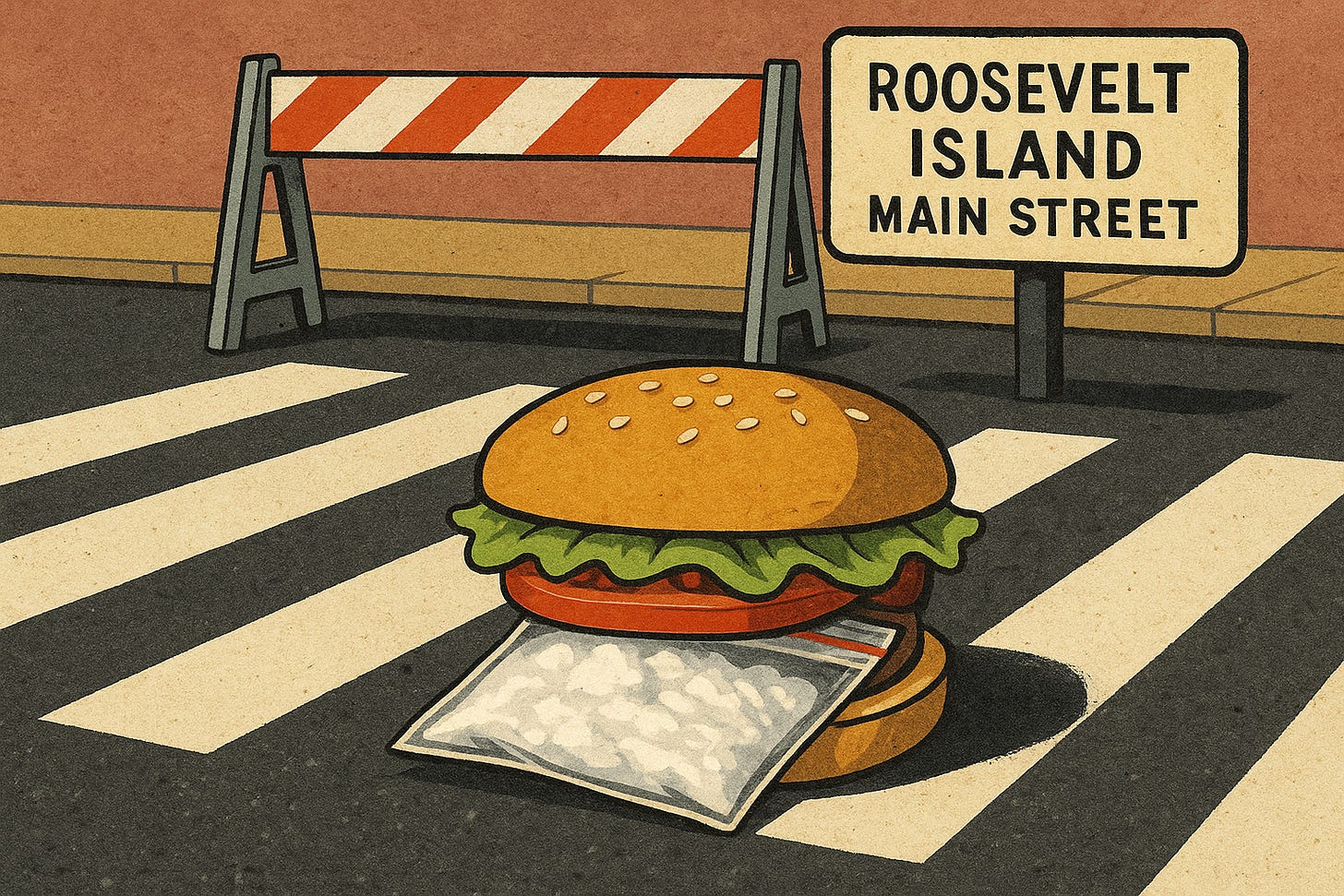100 Days of Grace
A New Era, or a Countdown?
B.J. Jones has been in the President’s chair at RIOC for just over a month. The community, weary but hopeful, is giving him what every new leader gets: about 100 days of grace. That’s the window to show direction before people decide whether anything has really changed.
He doesn’t have to solve every problem by day 101. But he does need to show he understands Roosevelt Island’s biggest issue—trust—and that he’s willing to act without waiting for Albany’s permission.
Who He Is
Jones isn’t a stranger to public service. Before arriving here, he ran the Battery Park City Authority, managing a $350 million budget and major resilience projects. He spent over 20 years in New York City government, working on housing, management, and community engagement.
He’s known as a professional administrator, steady, process-driven, not flashy. People who’ve worked with him describe a calm listener who tries to fix systems rather than win headlines. That’s good news for Roosevelt Island, which has had too much drama and not enough follow-through.
But experience alone won’t repair years of mistrust between RIOC and residents. Jones now leads an agency seen as secretive and self-protective. His challenge is to prove that “community-focused development” isn’t a slogan, it’s an operating principle.
Parking: The First Real Test
So far, Jones has made one visible move that residents immediately noticed: he removed the four “executive” parking spots on Main Street once reserved for RIOC leadership. The signs came down within weeks of his arrival. It was small, symbolic, and free—but it mattered.
The next question is whether that gesture signals a genuine cultural shift. Because just a few yards away, Public Safety Department (PSD) vehicles now occupy four more Main Street spaces, permanently parked in front of their office instead of where they could actually serve the public—the Motorgate Bridge, the subway station, or the tram plaza, the island’s natural chokepoints.
At a time when Main Street parking is scarce and the Roosevelt Landings façade project has squeezed lanes even tighter, locking up prime curb space for idle PSD cars sends the wrong message. It’s an easy fix if leadership has the will: move the cars where they’re useful and give Main Street back to residents.
Barriers, Barricades, and a Wall of Silence
If you’ve walked past Bread & Butter Market, you’ve noticed it: a stretch of metal barricades running along Main Street, boxing off a section of curb and funneling pedestrians toward the crosswalk. They’ve been there for years—some days re-stacked neatly, other days scattered like an afterthought. What’s missing is any official explanation.
RIOC hasn’t issued a statement. PSD hasn’t briefed the community. The result is a vacuum filled by rumor.
Sources inside RIOC and Public Safety describe the barricades as part of an ongoing police investigation centered near the Bread & Butter storefront. If true, that would explain the prolonged presence. But the story doesn’t quite add up. When residents asked why a “temporary safety measure” has turned semi-permanent, no one could point to a public notice, a safety order, or even a board-level acknowledgment. An investigation may well be “active”—but without communication or visible activity, the whole thing fails the basic smell test.
What’s clear is this: the barricades have become a symbol of the same opacity that has plagued RIOC for years. Even when actions are justified, silence erodes credibility faster than misconduct.
There’s also a practical cost. The barricade zone has effectively erased several curbside spaces, while PSD continues to park four of its own vehicles along Main Street in front of headquarters. If safety around Bread & Butter is truly the concern, those cars should be repositioned to the island’s chokepoints—the Motorgate bridge, the subway plaza, or the tram loop—where they could both deter problems and improve response times.
And if the barricades really are about controlling access to Bread & Butter—whether because of an “active investigation” or some other unspoken concern—then at least own that decision publicly. Right now it looks less like a safety plan and more like an attempt to quietly isolate one business. We’re not advocating for singling anyone out; quite the opposite. Those spaces should be cleared and repurposed for something the whole community can use: short-term loading zones, accessible drop-offs, or restored long-term parking.
No press conference is needed—just a clear statement and a plan that makes operational sense. Roosevelt Island residents don’t expect perfection. They expect to know why their main street is being walled off, and they deserve a solution that puts people, not barricades, first.
The Culture Shift Opportunity
BJ Jones can start by acknowledging the obvious: something prompted these barricades, and the public deserves to know the general why and how long. A two-sentence statement would do more to rebuild trust than another month of silence.
Roosevelt Islanders don’t expect every investigation to be aired in public—but they do expect their streets back when the emergency ends. Until RIOC explains what’s going on, those barricades will stand for more than security; they’ll stand for the wall between residents and the truth.
For years, residents have described RIOC’s culture in three words: delay, dilute, deny.
Requests take months, statements answer questions nobody asked, and community concerns vanish into Albany’s black box. Jones could start reversing that today with a few simple changes:
End the double standard on parking. RIOC employees currently enjoy free Motorgate parking, costing the agency—and by extension, residents—tens of thousands each month. Keep the perk only for lower-paid staff or those on late shifts; charge fair rates for the rest.
Reassign PSD parking. Park patrol cars where they deter crime and help people, not where they advertise privilege.
Explain the barricades. Publish a short statement on what they’re for, who authorized them, and when they’ll come down.
Talk directly to residents. Hold short monthly updates—five minutes of facts, not filtered press releases.
None of this needs board approval or new funding. It’s about leadership choices. The community doesn’t expect miracles; it expects honesty and initiative.
Listening vs. Managing
Roosevelt Island is a peculiar ecosystem—a single road, a single garage, and 12,000 people who can tell within minutes when something changes. Decisions about a few parking spots or a line of barricades might seem trivial in Albany, but here they define how residents judge RIOC’s attitude.
Every president inherits the same two questions:
Will you listen to the people who live here?
Will you act when you don’t need permission to do so?
Shelton Haynes answered both poorly, surrounding himself with perks and silence. Jones doesn’t need to repeat that mistake. The easiest way to prove it is to keep doing what he started—fixing small, visible things quickly.
Bread-and-Butter Leadership
Reforming internal perks won’t win headlines, but it will win trust. Imagine the message if Jones announced that from now on, all RIOC staff pay for parking like everyone else—or that PSD patrols will rotate through public areas instead of treating Main Street as a private lot. These are the bread-and-butter decisions that show integrity.
Likewise, clearing up the barricade situation would show that RIOC respects residents enough to level with them. A one-paragraph notice would do more for credibility than any glossy press release.
Leadership on Roosevelt Island doesn’t require Albany politics or new laws. It requires political will inside RIOC—the courage to question habits that have hardened into entitlement.
Day 101: The End of Grace
The clock is running. By Day 101, the community will expect more than symbolic gestures. Islanders will want to see evidence of change:
A clear plan for Main Street use and parking fairness.
Transparency on public-safety measures.
Early steps toward a culture where information flows both ways.
Jones still has time to define his presidency before the cynicism sets back in. The grace period isn’t a trap—it’s a chance to prove that RIOC can finally serve the island, not itself.
For now, he’s earned cautious optimism. But come day 101, Roosevelt Island will be watching—and this time, expecting answers.



